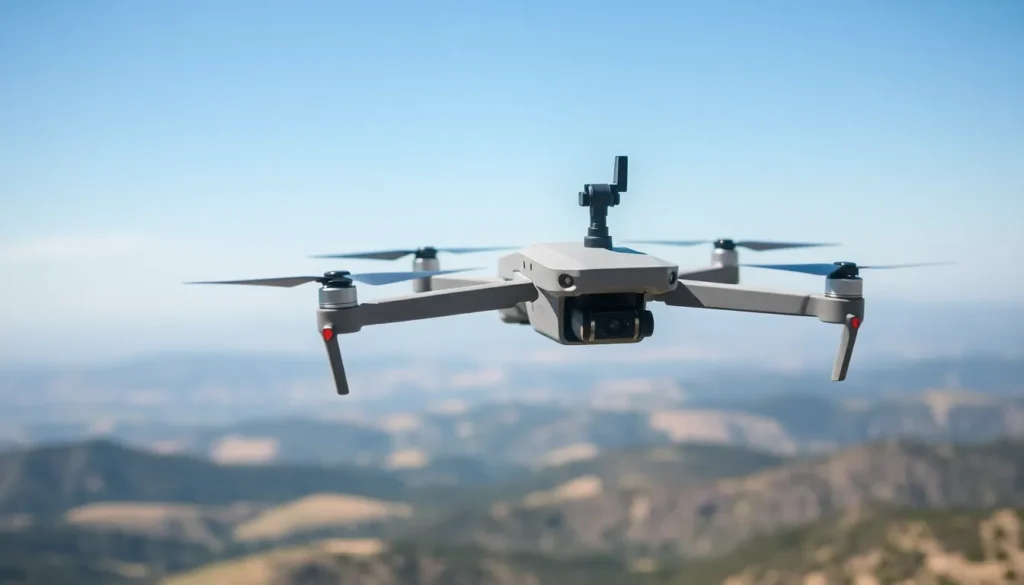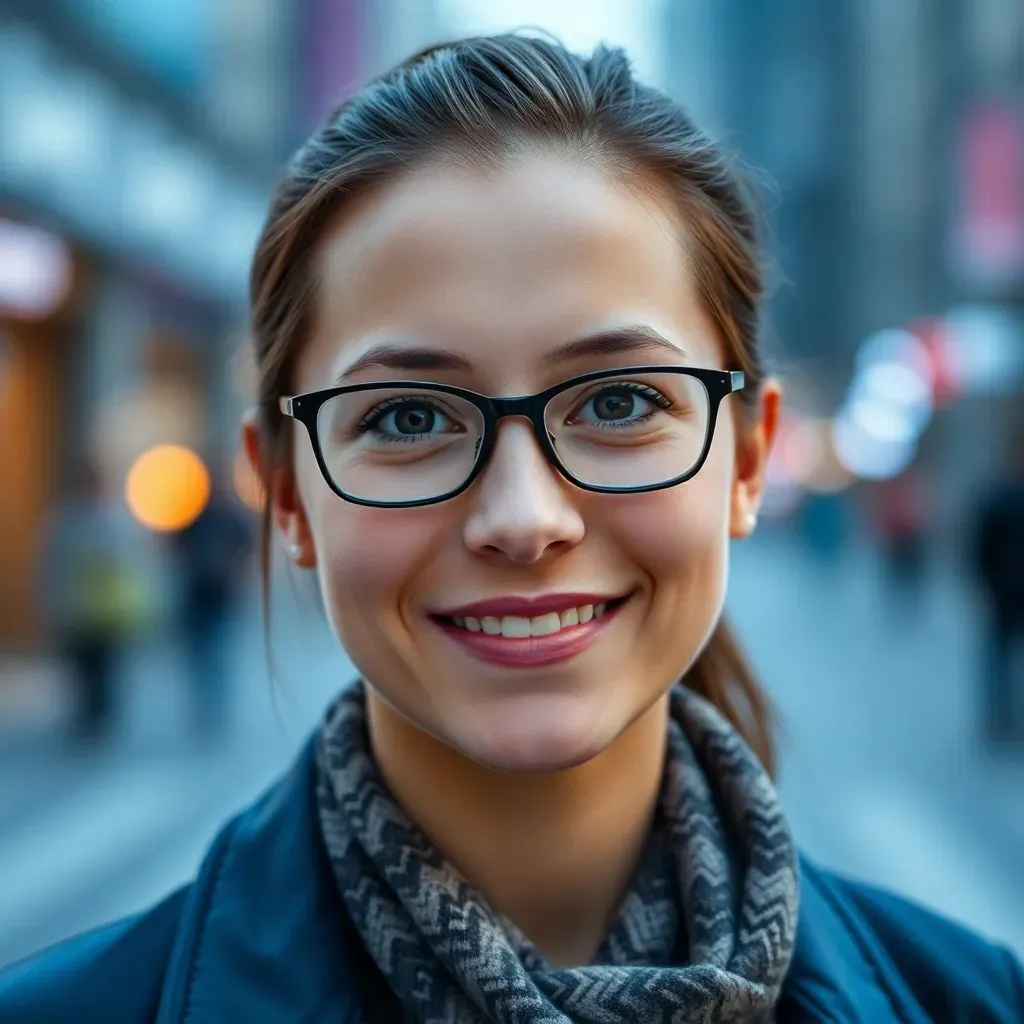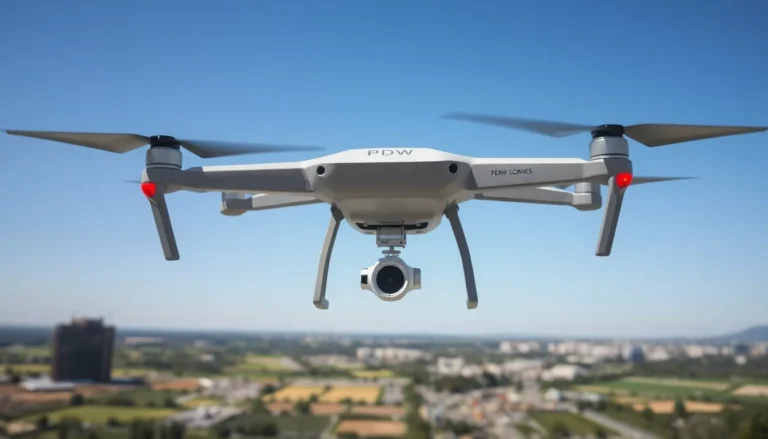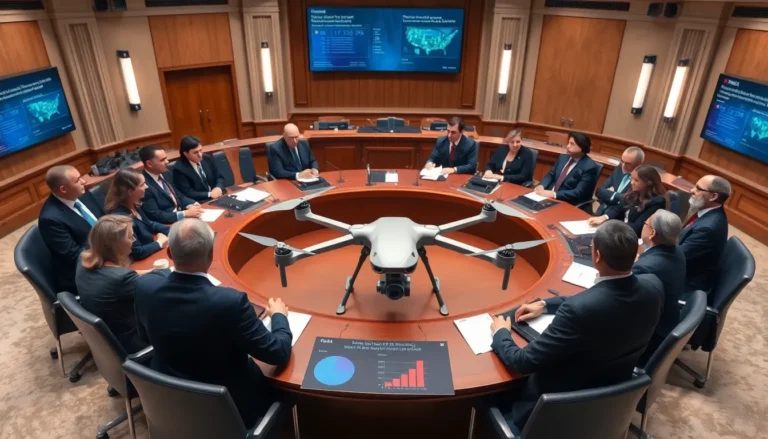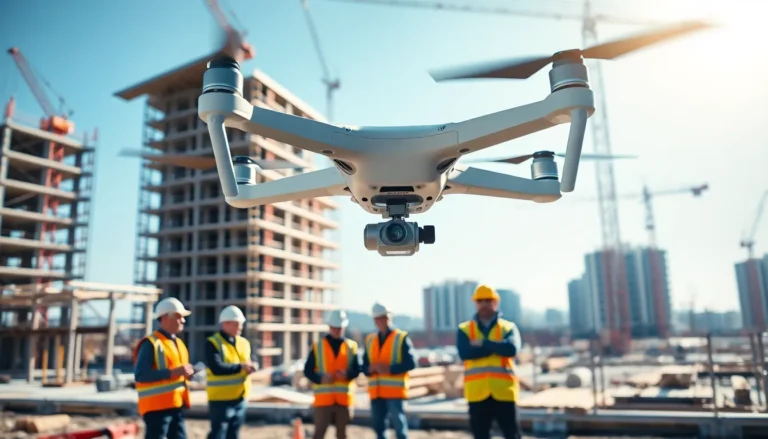In the fast-paced world of aerial photography, shaky footage can turn a breathtaking view into a dizzying disaster. Enter drone camera stabilization—the unsung hero that saves the day, ensuring every shot is as smooth as a buttered slide. Whether capturing stunning landscapes or filming the next viral video, stabilization technology turns amateur pilots into cinematic maestros with just a flick of a switch.
Table of Contents
ToggleOverview of Drone Camera Stabilization
Drone camera stabilization technology plays a crucial role in ensuring smooth video capture during flight. This technology reduces the effects of vibrations and sudden movements caused by wind or pilot control. Gimbals, which are essential components in many drones, provide significant stabilization by utilizing motors to counteract these movements.
Three-axis gimbals represent the gold standard in drone stabilization. They allow for pitch, roll, and yaw adjustments, resulting in fluid camera motion. This level of stabilization is particularly beneficial for filmmakers aiming to capture high-quality aerial shots.
In addition to gimbals, electronic stabilization systems often enhance footage quality. These systems digitally correct unstable video frames, maintaining clarity without sacrificing quality. Many drones today incorporate advanced algorithms to improve stabilization, further enhancing user experience.
Manual flight techniques also influence stabilization outcomes. Techniques like smooth joystick movements aid pilots in achieving steady shots, minimizing the need for post-processing corrections. Effective training helps novice pilots master these methods, leading to more professional results.
Drone camera stabilization enables users to capture stunning visuals with confidence. Whether for professional projects or personal adventures, stabilized footage reflects sophistication and careful planning. The integration of stabilization technology transforms aerial photography, making it accessible and enjoyable for everyone.
Importance of Stabilization in Aerial Photography
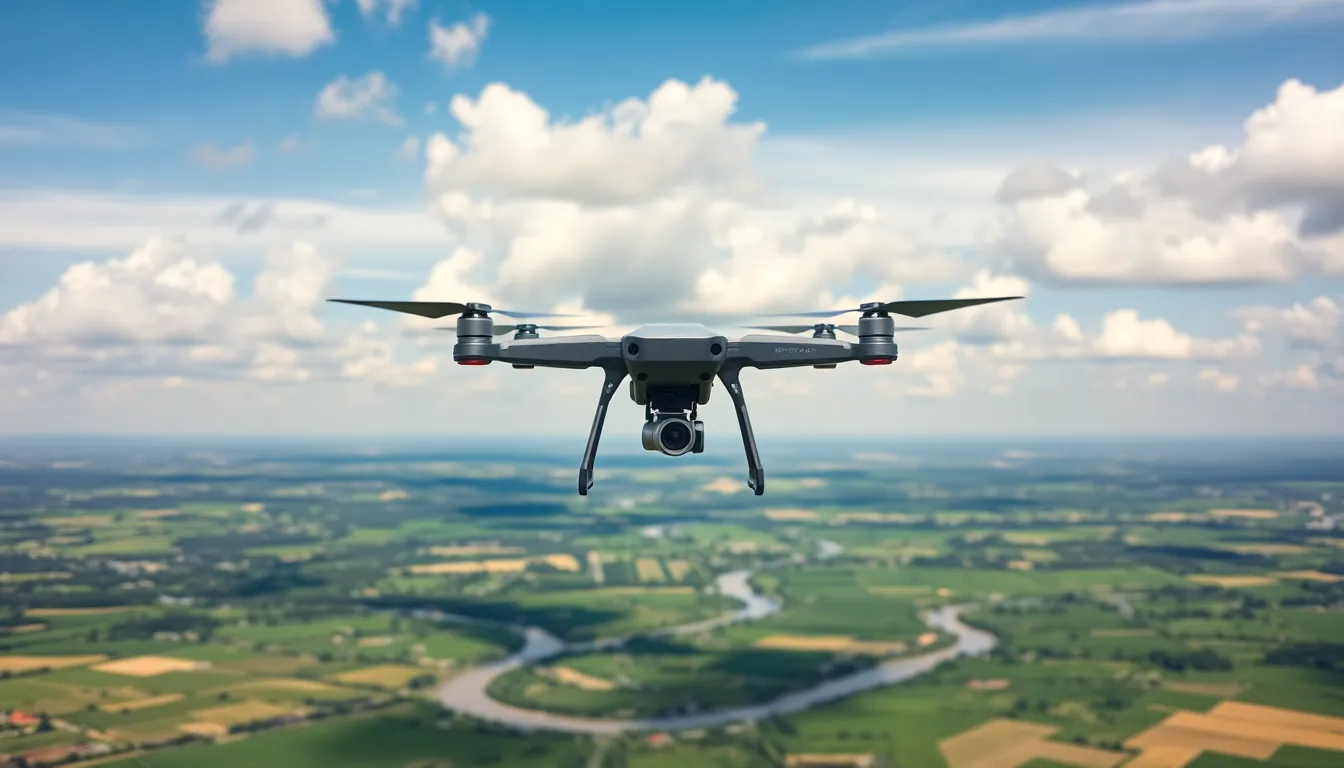
Stabilization is vital in aerial photography for capturing high-quality footage. Smooth video enhances the overall viewing experience, as shaky clips detract from the visuals.
Enhancing Video Quality
Perfect stabilization results in professional, cinematic shots. Visuals become more appealing when drone footage lacks jitter caused by turbulence or erratic movements. Users benefit from technology that enables gimbals to adjust tilting and rotation in real time. Utilizing three-axis gimbals ensures optimal fluidity, allowing filmmakers to produce engaging content without noticeable interruptions. Once stabilization is in place, even amateur pilots achieve high-quality results reminiscent of seasoned professionals.
Combating Environmental Factors
Environmental conditions can significantly affect aerial photography quality. Wind gusts and rapid altitude changes often contribute to unwanted vibrations in footage. Stabilization technology mitigates these challenges effectively, providing smoother recordings. Implementing stabilization systems helps combat the negative impact of external forces, ensuring that moments captured remain clear and focused. Drone pilots maintain better control over their footage under varying circumstances, allowing them to adapt to unpredictable weather conditions seamlessly.
Types of Drone Camera Stabilization Techniques
Various techniques enhance drone camera stabilization, ensuring smooth footage during flight. Two primary methods for achieving stabilization include mechanical stabilization and electronic stabilization.
Mechanical Stabilization
Mechanical stabilization primarily relies on gimbals to counteract motion. Three-axis gimbals are the most effective, allowing adjustments in pitch, roll, and yaw. They provide a physical buffer against vibrations and rapid movements, ensuring the camera remains steady. These gimbals operate using motors that respond to changing conditions in real time. Operators often appreciate how mechanical systems enhance professionalism in aerial shots. Additionally, they have a minimal impact on battery life, which is crucial during extended flights.
Electronic Stabilization
Electronic stabilization utilizes software algorithms to enhance video quality. This technique processes images captured by the camera, correcting frame shakes and jitters. By analyzing the video feed, electronic systems apply digital corrections to stabilize shots. Many drones incorporate this feature for added convenience. It proves especially useful in situations where mechanical stabilization methods may fall short. Users enjoy the benefits of improved footage without the extra weight of mechanical components. Thus, it simplifies drone design while maintaining high-quality results.
Key Features to Look For
When selecting drone camera stabilization options, several features deserve attention. These elements can significantly impact overall performance and video quality.
Gimbal Systems
Three-axis gimbals serve as the industry standard for providing stabilization. They enable independent control of pitch, roll, and yaw, effectively reducing vibrations from drone movements. Many drones utilize advanced gimbal systems that offer smooth camera transitions during flight. Some models incorporate lightweight materials to minimize impact on battery life, enhancing flight duration. Users frequently find that these gimbals improve the overall quality of aerial footage, resulting in a more professional look.
Software Stabilization
Software stabilization works through algorithms that correct shaky footage during post-production. Many drones now include electronic stabilization features that can significantly enhance video quality. This technology compensates for sudden camera movements and adjusts frames to provide seamless viewing experiences. Some drones enable users to select stabilization levels based on their filming conditions. This flexibility allows for effective stabilization without compromising on footage resolution or quality, ensuring that the final product appears polished and well-crafted.
Benefits of Effective Drone Camera Stabilization
Effective drone camera stabilization brings clarity and professionalism to aerial footage, allowing filmmakers and enthusiasts to showcase their work.
Improved Image Clarity
Clarity in images increases significantly with stabilization technology. Smooth footage minimizes blurriness caused by rapid movements and vibrations, ensuring that every detail is visible. High-resolution captures emerge crisp and vivid when stabilization techniques are applied. Resulting images often require less post-processing due to reduced motion blur, which streamlines production time. Consistent framing also enhances focus on the subject, allowing viewers to engage more deeply with the content.
Professional-Grade Footage
Professional-quality footage becomes achievable for both novice and experienced pilots with effective stabilization. Film-like quality emerges from gimbals that maintain steady angles during flight, eliminating jitters. Captured scenes appear more cinematic, attracting attention and admiration. Smooth transitions between shots create a seamless viewing experience, which resonates with audiences. This level of professionalism turns personal projects into visually stunning presentations, making drone operations more rewarding.
Drone camera stabilization is a game-changer for aerial photography. It not only elevates the quality of footage but also makes the art of flying more accessible to everyone. With advancements in gimbal technology and electronic stabilization, capturing smooth and professional-grade videos has never been easier.
As drone pilots navigate various environmental challenges, effective stabilization ensures that every shot remains clear and focused. This technology transforms shaky recordings into captivating visuals that engage audiences and enhance storytelling. Whether for personal projects or professional endeavors, investing in quality stabilization tools is essential for anyone looking to make a lasting impression with their aerial footage.

